Alive!
Disney/Paramount Productions
Maybe the most challenging
of the film projects I've yet to work on and definitely the most
fun. In my role as a head sculptor I was called upon first to create
2 replicas of the crashed Fairchild. Real aircraft were used for
this (hey, it wasn't my choice). From documentary photographs of
the actual crashed plane and crash site we deconstructed the fuselage(s)
from the inside out removing most structural support. Then with
'sculptural tools' such as hydraulically assisted rams and vises,
pneumatic chisels and hammers we cut & beat the airplanes into
the required shapes. All this was completed at studios in Vancouver.
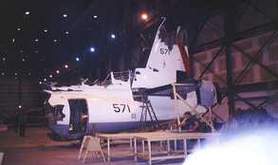 |
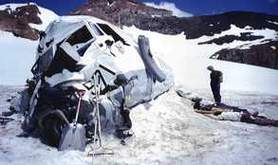 |
The 'sculpted fuselage'
were trucked then airlifted (one only) onto the glacier location
in the east Kootenays in the interior of BC. The second fuselage
came to rest in a huge tent erected to create a soundstage match
for the exterior glacier location. Once placed the planes had to
be 'dressed in'. A quarter mile long furrow was sculpted behind
the fuselage wreckage on the real glacier (this in fact is actually
what was created by the plane as it skidded down the glacier. In
the sound stage version a forced perspective 'psychic' created the
illusion along with tons and tons of salt).
The most challenging
and fun of all I did on 'Alive' without a doubt was the 'breakaway
snowbridge'. This 'gag' was the greatest departure from the otherwise
factual telling of the tale of these unfortunate men. It was added
to create drama and to add some nifty special effects footage to
an otherwise boring story of some poor castaways eating each other.
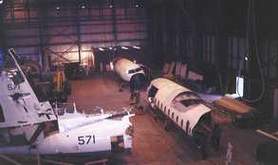 |
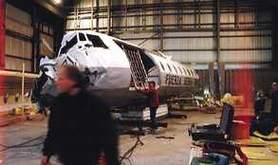 |
The snowbridge was
directly carved in polystyrene foam. It was comprised of 64 individual
pieces all carved to fit together in such a way that they held each
other in place as they became wedged between two large stationary
bricks of foam. A keystone bridge, in fact, is what we built. The
size of he bridge was determined by the size of the crevasse that
was selected (many trips in the helicopter to find and measure the
right crevasse). Once measured the snowbridge was built back at
the 'studio'- Actually a plastic lean to behind the snowcat repair
shack at the ski resort which we, the crew used as our base. Here
all the 64 pieces were carved into place to form the self-supporting
arch of the bridge.
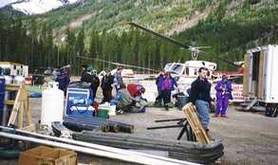 |
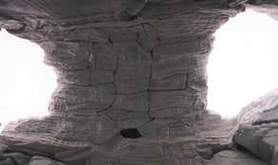 |
Once built a 'plan
or map' was drawn of the bridge with each part numbered to correspond
to its position in the arch. Once disassembled each part was carefully
wrapped in plastic bags and packed into the 'crabnet' a huge aluminum
framework with netting attached to hold all the styro parts as it
was 'longlined' to the location. The helicopter carried the crabnet
basket attached to a 50' cable slung under the helicopter. It was
a long trip. Just to fly the crew there took an average of 40 minutes
depending on the weather and whether or not we got lost on the way,
which did happen once. The trip with the crabnet took over an hour.
While we had been building the snowbridge back at the ski resort,
the effects crew (John Thomas SPFX) were installing a suspended
platform over the crevasse from which my crew would reassemble the
bridge. Once all the bridge sections were there it was a race against
time and weather. We were lucky and managed to ship and install
the bridge in one day. All this along with a few other stunt effects
we did in the bugaboos with Ethan Hawk made 'Alive' a most memorable
experience.
|
